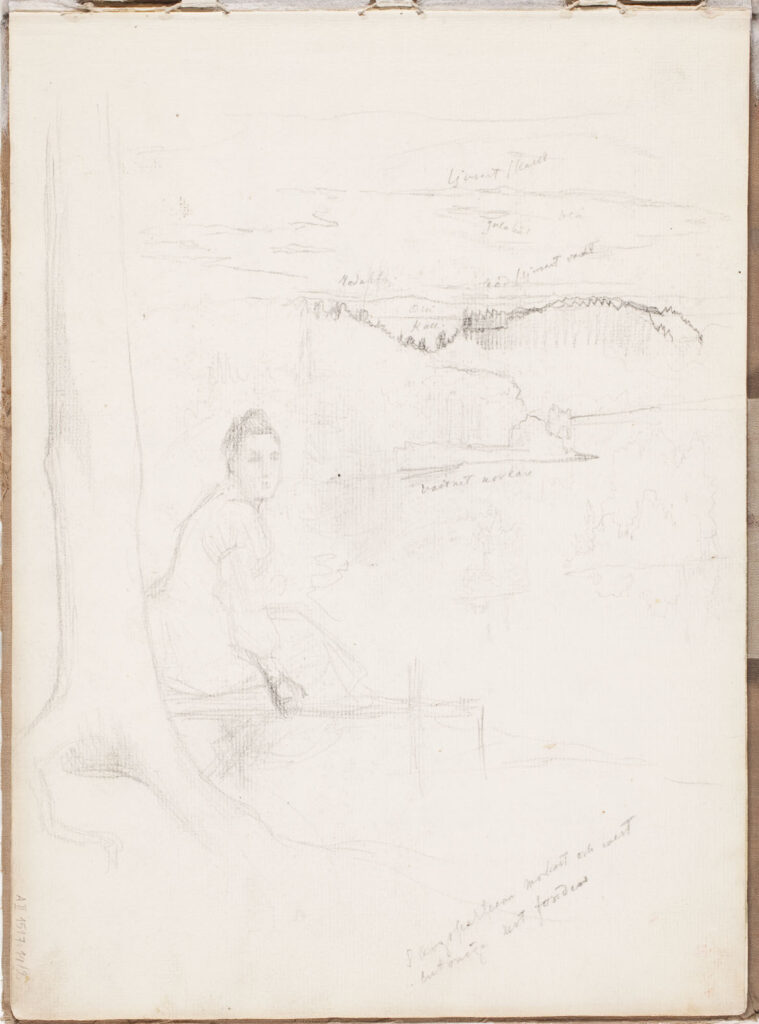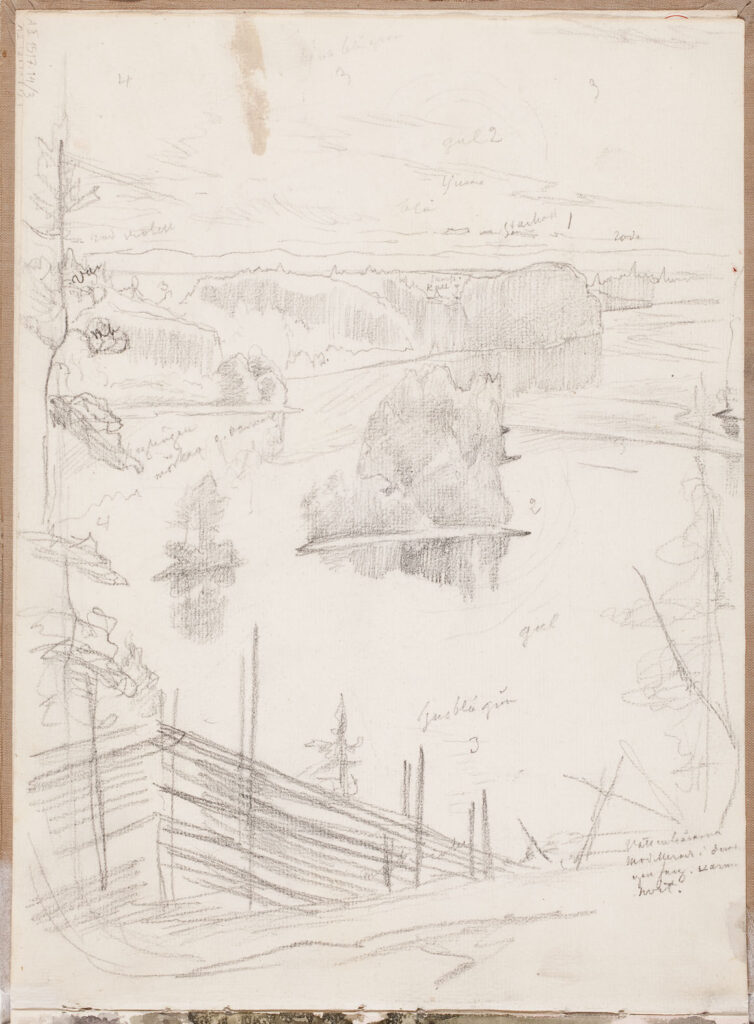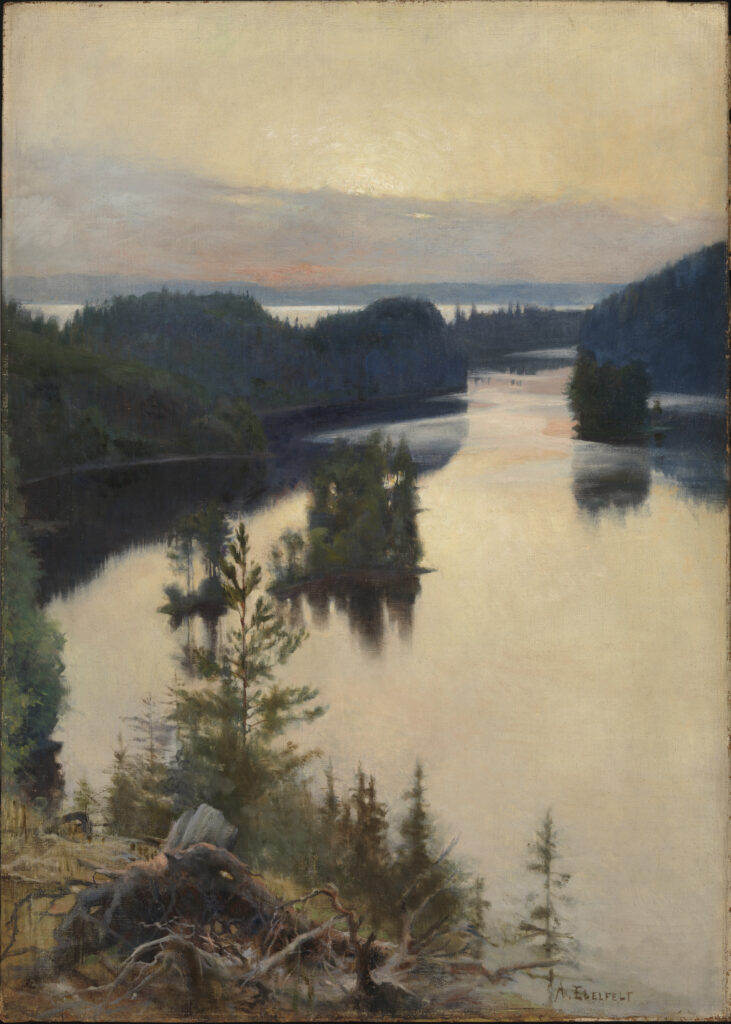
The landscapes of Kaukolanharju have inspired both local and visiting artists. The landscape has been immortalized by, for example, Magnus von Wright, Robert Wilhelm Ekman and, most famously, Albert Edelfelt.
Harju artists
The landscapes of Kaukolanharju have inspired both local and visiting artists. The landscape has been immortalized by, for example, Magnus von Wright (1805?1868), Robert Wilhelm Ekman (1808?1873) and, most famously, Albert Edelfelt (1854?1905).
In the 1840s, von Wright, who spent the summer with his relatives at the Saare manor, sketched the landscape of the ridge in pencil and later an oil painting, in the lower edge of which, according to tradition, the artist depicted the people of the manor and himself as a student in a cap. Robert Wilhelm Ekman, on the other hand, got to know Kaukolanharju while painting the altarpiece of Tammela church. Ekman depicted the view from Kaukolanharju as a charcoal and pastel drawing in 1871. The dark tone of the work is influenced by the death of the artist's wife in the same year.
Von Wright's and Ekman's works both depict the Finnish lake landscape as seen from a high vantage point in a typical way. Both works were probably also familiar to Albert Edelfelt, who later made his own version of the Kaukolanharju landscape.
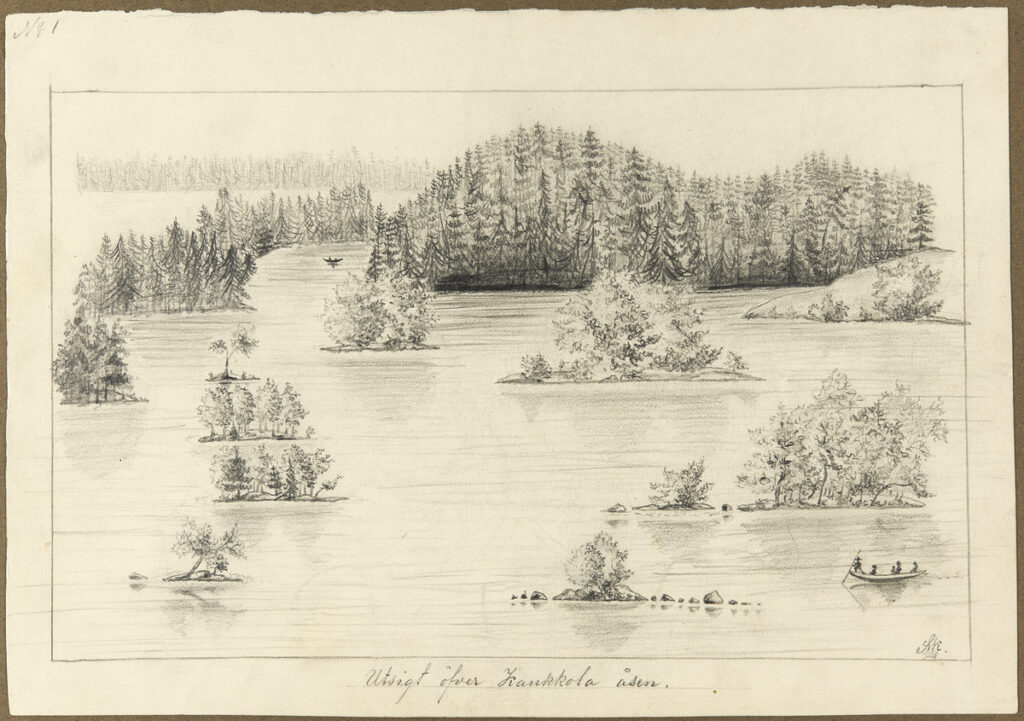
Kajanus, S. The view from Kaukolanharju. 1873-1899. Museum Agency.
Albert Edelfelt
Albert Edelfelt (1854?1905) was one of the most important artists of the golden age of Finnish art. Edelfelt also studied and worked abroad, and became known both in the salons of Paris and in the courts of Europe.
During his career, Edelfelt had time to paint both well-known portraits and landscape paintings. In addition to Parisian beauties, Edelfelt also photographed domestic historical and religious subjects. His style varied from historical romanticism to naturalistic and impressionistic styles.
As an artist, Edelfelt has been found to have been a kind of middle-of-the-road traveler. He wasn't an actual reformer or rebel, but a brilliant painter whose works made Finland known to the world. Edelfelt's most famous works include, for example, ?Queen Blanka? 1877, ?The funeral of a child? 1879 and ?Ruokolahti eukko on kirkonmäki? 1887.
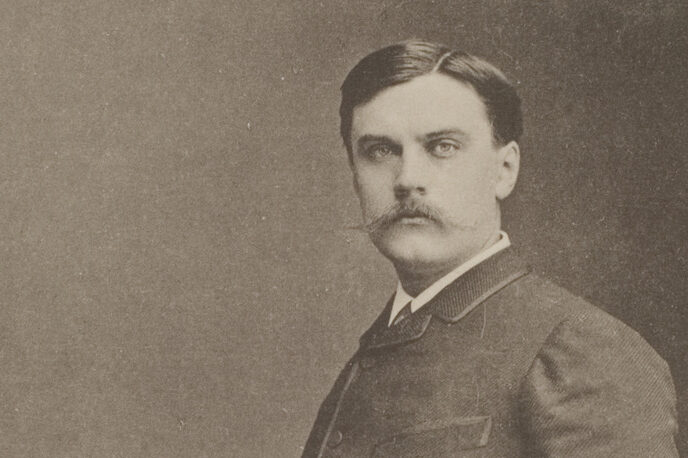
Edelfelt on Kaukolanharju
Many of Edelfelt's outdoor works are located in Haikko, Porvoo, where the artist had a summer villa. However, one of the artist's most famous landscape paintings is located in Inner Finland and on the Kaukolanharju in Tammela.
Harju and its surroundings became familiar to Edelfelt when the artist married his childhood friend, Anna Elise (Ellan) de la Chapelle (1857?1921), the daughter of Saari Manor, in 1888. The young couple spent summers and Christmases at the wife's home manor, whose landscapes and people inspired Edelfelt. He painted, for example, the buildings of the Saare manor, as well as his work ?Veräjä? in the village of Portaa. 1889.
The most famous of the works created on the spot is Kaukolanharju at sunset, but Edelfelt also sketched other versions on the ridge. In the sketches, for example, you can see the boundary fence that was on the spot, and in another the artist has sketched his wife sitting on a ridge.
Photos: Edelfelt, A. The view from Kaukolanharju. National Gallery / Ateneum Art Museum. Edelfelt, A. Sketches from Kaukolanharju.
Kaukolanharju at sunset
Edelfelt's work Kaukolanharju at sunset (1889?1890) depicts the landscape from the ridge to the northwest of the strait between Pyhäjärvi and Kuivajärvi. It depicts the soon-to-be-disappearing moment of a summer night, when the sunset is at its most golden before it sinks behind the horizon. Anyone looking at the landscape can see that Edelfelt has defined his work precisely. The border fences and all signs of settlement on the site have been left out of the final work, so nature seems almost untouched.
Edelfelt completed the work he had sketched on Kaukolanharju in Paris in 1890, where it was also sold. The work was missing for a long time, before it was finally bought for Ateneum's collections in the 1970s. Although Edelfelt has not really been considered a landscape painter, Kaukolanharju at sunset is one of the most famous Finnish landscape paintings.

Albert Edelfelt. Kaukolanharju at sunset. National Gallery / Ateneum Art Museum
The completion of the work is best described by the artist's letter to his mother:
?A big sunset view from the ridge is damn hard. I work like a horse, but I don't get any good out of it. Yesterday I was absolutely desperate. The impression lasts a quarter of an hour altogether; then the water flashes silver, ruby, topaz and is alone in color, changing both its shape and color to the ever-changing. And trying to picture these forested islands, all dark blue-black with air and water between them, so that it looks flat, and its distance to the line of sight is many miles long, turns my hair gray.?
Albert Edelfelt
Read more: Kaukolanharju observation tower
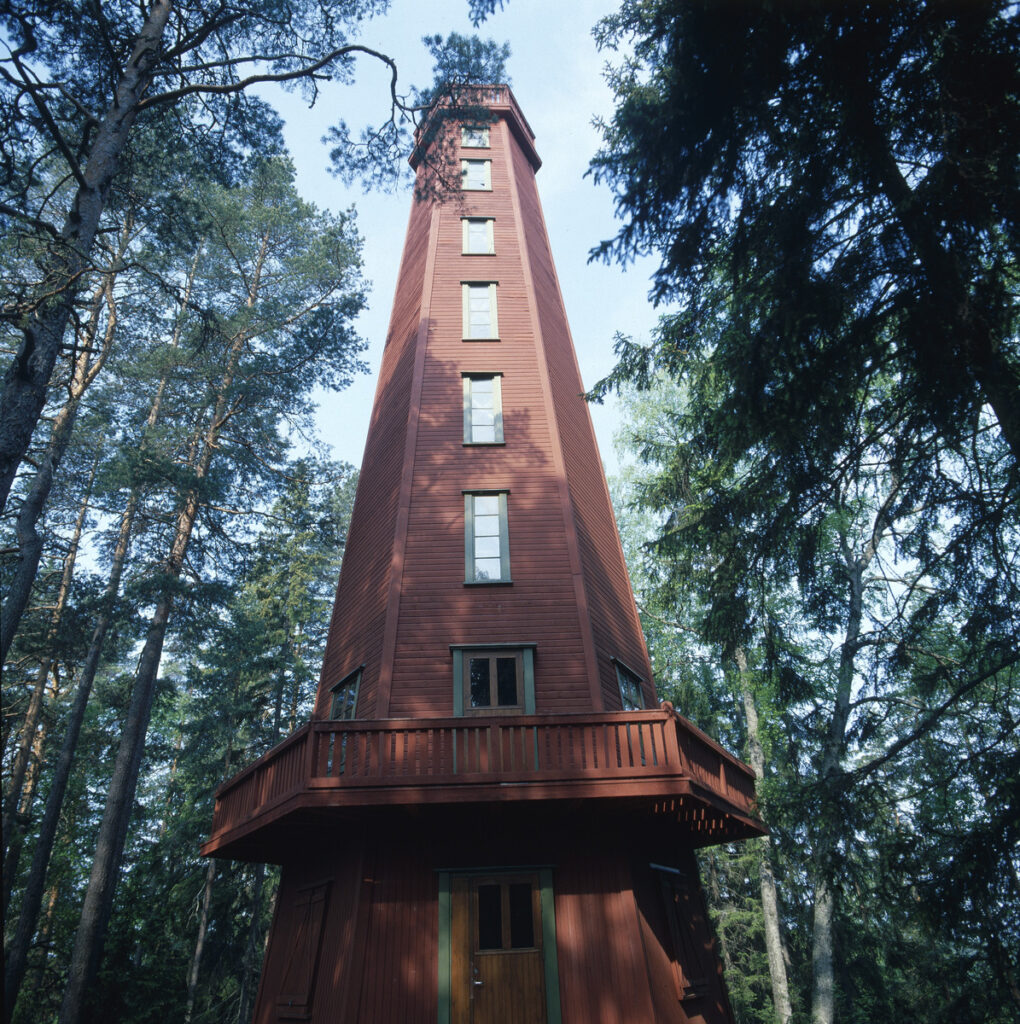
In 1924, the Finnish Tourist Association urged Finns to build observation towers in scenic areas. The influential people in Southwest Häme started to do everything. The opening of Tammela's Kaukolanharju lookout tower was celebrated in July 1926. In the festive speeches, it was hoped that the lookout tower would develop our sense of beauty as well as refine our inner man, and teach us to respect God, love our neighbors and our home region, and the whole country. The landscape from the observation tower inspired at least the artist Albert Edefelt, who painted one of the most famous Finnish landscape paintings ?Kaukolanharju at sunset?.
TAMMELA MUNICIPALITY


